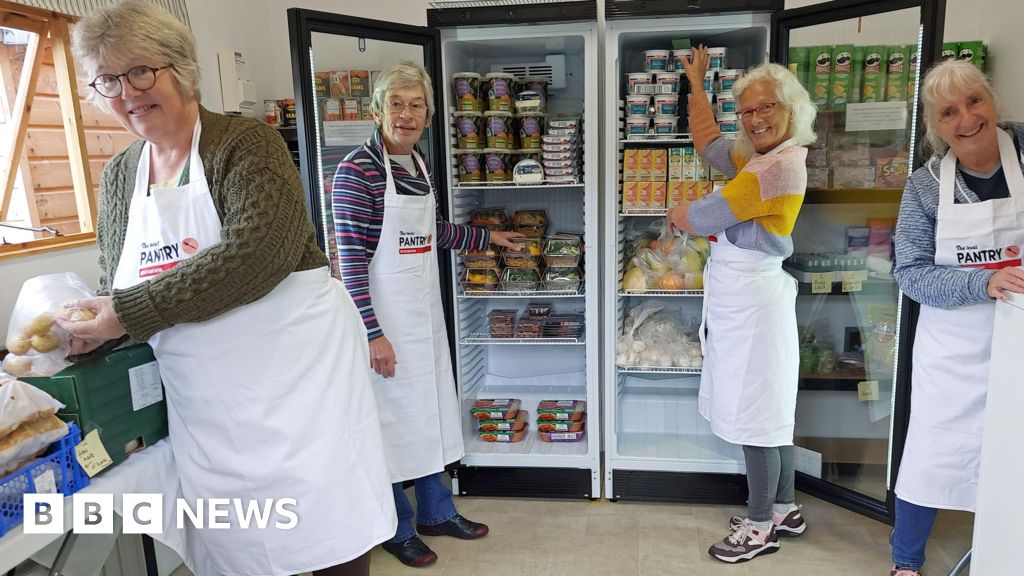7 Essential Steps for Successfully Launching Your Craft Business

Launching a craft business requires careful planning and execution. Start by researching your market to identify your audience and trending products. Then, define what makes your brand unique to stand out in a competitive environment. Product design is vital, so create prototypes that appeal to your target customers. Choosing the right sales platforms and marketing strategies will further improve your reach. Comprehending your finances is fundamental for sustainability. As you refine your approach, you’ll discover what works best for your business.
Key Takeaways

- Conduct thorough market research to identify trending products and understand your target audience’s preferences and purchase motivations.
- Define your unique selling proposition (USP) to differentiate your brand and align with customer values.
- Develop appealing product designs by researching aesthetics, choosing quality materials, and creating prototypes for feedback.
- Choose the right sales platforms, considering fees and brand control, while exploring local selling opportunities to maximize reach.
- Establish a detailed budget and pricing strategy to ensure profitability, factoring in all costs and regularly reviewing financial performance.
Research Your Market and Audience

When you start a craft business, grasping your market and audience is crucial to your success.
Begin by conducting market research on platforms like Etsy and Amazon Handmade to uncover trending products and customer preferences. Create detailed customer personas that consider demographics, interests, and purchase motivations to better tailor your offerings.
Engage with niche communities on social media to gain direct insights into consumer needs, enhancing your product line. Analyze competitor offerings, focusing on their pricing and customer reviews, to identify gaps in the market you can fill.
Finally, understand key purchase motivators—whether functionality, aesthetics, or gifting potential—to develop products that resonate with your audience and help you decide how to effectively name your craft business.
Define Your Unique Selling Proposition

Defining your Unique Selling Proposition (USP) is crucial for establishing your craft business in a crowded marketplace. Your USP should clearly articulate what makes your products distinct, whether it’s the craftsmanship, materials, or design approach.
Start by conducting a competitive analysis to find gaps in the market that your offerings can fill. Align your USP with your target audience’s values, like sustainability or handmade authenticity, to forge a deeper emotional connection.
A compelling USP not only differentiates your products but also improves your brand messaging, clarifying the benefits of choosing your crafts over others. Regularly gather customer feedback and analyze market trends to keep your USP relevant, helping you choose the best names for your craft business or another word for craft shop.
Design Your Products

Designing your products is a critical step that directly impacts your craft business’s success. Start by defining the purpose of each product; determine if it’s functional, decorative, or serves both needs.
Research current aesthetics and trending styles in your niche to align with market demand. Choose materials that reflect your brand values and resonate with customer preferences, as quality improves perceived value.
- Create prototypes to test your designs and gather early feedback.
- Incorporate feedback to refine and improve functionality and aesthetics.
- Focus on customer satisfaction to guarantee your offerings meet market needs.
- Iterate on designs as necessary to improve overall appeal.
These steps will streamline your design process and set a strong foundation for your business.
Choose Where to Sell Your Products

Choosing where to sell your products is a vital step in launching your craft business.
You can explore online marketplaces like Etsy or Amazon Handmade, which have specific costs and guidelines, or consider local options such as craft fairs and boutiques for direct customer interaction.
Weigh the pros and cons of each platform, including fees and control over your brand, to find the best fit for your sales strategy.
Online Marketplace Options
When you’re ready to sell your craft products online, it’s essential to explore various marketplace options that suit your needs and target audience.
Here are a few popular platforms to take into account:
- Etsy: Ideal for handmade and vintage items, with over 4.3 million active sellers.
- Amazon Handmade: Connects you to a global customer base, broadening your reach.
- Shopify: Provides a customizable e-commerce platform, allowing you full control over branding and sales.
- ArtFire: Focuses on handmade, vintage, and craft supplies, supporting small businesses.
These platforms can help you effectively showcase and sell your products as you reach your desired market.
Take the time to evaluate each option based on your unique business goals and audience preferences.
Local Selling Opportunities
Exploring local selling opportunities can significantly improve your craft business and connect you with your community. Farmers’ markets, craft fairs, and community events let you showcase your products directly to customers, providing instant feedback and relationship-building chances.
You might also consider partnering with local boutiques for consignment sales, reaching shoppers who prefer local goods while minimizing online selling costs. Setting up pop-up shops in busy areas or collaborating with local businesses for special events can boost your visibility and attract new customers.
Joining artisan guilds or craft organizations can open doors to exclusive selling opportunities and networking events. Moreover, platforms like Facebook Marketplace can help you engage with local buyers and facilitate quick sales without needing a physical storefront.
Platform Cost Comparison
How do you determine the best platform for selling your crafts? Start by comparing costs across popular options. Each platform has unique fees that can impact your profits.
- Etsy: $0.20 listing fee per item, plus a 5% transaction fee on sales.
- Shopify: Subscription plans begin at $29/month, with additional fees except you use their payment processor.
- Amazon Handmade: No listing fees, but a 15% referral fee on each sale, making it ideal for high-volume sellers.
- Local craft fairs: Booth fees range from $25 to $300, providing a lower-cost entry point for new vendors.
Also, factor in shipping, fulfillment, and payment processing fees, which can further affect your overall profit margins.
Build Your Brand Identity

Building your brand identity is essential for your craft business, as it helps you stand out in a crowded market.
Start by crafting a unique name that reflects your craft’s essence and values, then develop visual identity elements like a logo and color palette that resonate with your target audience.
Finally, guarantee consistent messaging across all platforms to establish trust and recognition among your customers.
Craft a Unique Name
A distinctive name serves as the cornerstone of your craft business, helping to establish your brand identity and attract your target audience.
To create a memorable name, consider the following:
- Choose a name that reflects your craft style and resonates with your audience, enhancing brand recall.
- Verify that the name isn’t already trademarked by checking the USPTO database to avoid legal issues and conflicts.
- Incorporate relevant keywords related to your craft, improving searchability in online marketplaces.
- Opt for a name that evokes an emotional connection, as stories behind names can boost customer loyalty.
Aim for a name that’s easy to spell, pronounce, and remember, which is crucial for effective word-of-mouth marketing and building brand recognition.
Visual Identity Elements
Creating a strong visual identity is essential for establishing your craft business, as it helps communicate your brand’s personality and values to your audience. A cohesive visual identity includes elements like a logo, color palette, and typography that reflect your brand.
For example, consistent use of your selected colors can boost brand recognition by up to 80%. Your logo should be simple, memorable, and scalable, ensuring it looks great across various platforms.
High-quality images showcasing your products in real-life contexts can strengthen emotional connections, as visuals are processed much faster than text.
Finally, maintain a consistent tone in all communications to build trust and reinforce your brand identity, from product descriptions to social media posts.
Consistent Messaging Strategy
Establishing a consistent messaging strategy plays an essential role in building your brand identity. A cohesive approach improves recognition and cultivates deeper connections with your audience.
Here are key elements to reflect on:
- Storytelling: Share your expedition to evoke emotions; it can make you 22 times more memorable.
- Tone of Voice: Choose a voice that resonates with your target audience, improving engagement and loyalty.
- Tagline: Develop a memorable tagline that captures your brand’s essence and unique selling proposition.
- Visual Consistency: Guarantee logos, colors, and fonts are uniform across all platforms, increasing trust and loyalty by 23%.
Create a Marketing Plan

Developing a solid marketing plan is crucial for the success of your craft business. Start by identifying your target audience through demographic analysis, interests, and buying behaviors. This will help tailor your marketing strategies effectively.
Utilize a mix of channels like social media, email campaigns, and content marketing to maximize your reach and engage potential customers. Set measurable goals, such as increasing website traffic by 20% within six months, to track progress.
Collaborate with influencers or other artisans to expand your audience and generate buzz around your products. Finally, regularly assess your marketing performance by analyzing metrics like conversion rates and customer feedback, allowing you to refine your approach for better results.
Plan Your Business Finances

When you plan your business finances, it’s essential to outline all startup costs, which should include expenses like materials, tools, packaging, marketing, and any licenses you might need.
Creating a detailed budget helps you account for ongoing costs, ensuring your financial health. Here are some key components to reflect on:
- Restocking supplies: Keep track of what you need to replenish regularly.
- Shipping costs: Factor in delivery expenses for your products.
- Platform fees: Be aware of any costs for selling on online marketplaces.
- Funding options: Explore small business loans, grants, or crowdfunding to secure capital.
Utilizing a solid pricing strategy and maintaining accurate records will further support your craft business’s success.
Frequently Asked Questions

How to Start a Successful Craft Business?
To start a successful craft business, begin with thorough market research to understand customer demand and analyze competitors.
Next, create a detailed business plan outlining your goals and pricing strategy.
Establish a strong online presence by building a user-friendly website and utilizing social media.
Set competitive prices that cover costs during reflecting your craftsmanship.
Finally, seek customer feedback and adapt your offerings based on market trends to guarantee continued growth and relevance.
Do I Need an EIN to Sell Crafts?
You mightn’t need an Employer Identification Number (EIN) to sell crafts, especially if you’re a sole proprietor without employees.
Nevertheless, obtaining an EIN can simplify your finances, helping you separate personal and business accounts. Some states require an EIN for sales tax registration, even though you don’t have employees.
Plus, having an EIN improves your credibility when opening a business bank account or applying for permits. You can get one for free on the IRS website.
How to Successfully Sell Crafts?
To successfully sell crafts, start by researching market trends and customer preferences on platforms like Etsy.
Create a unique selling proposition that showcases what makes your crafts special.
Next, design an appealing online store with quality images and detailed descriptions.
Use social media and email marketing to reach potential customers, during participating in local events to build connections.
Finally, set competitive prices that reflect your craft’s quality, ensuring profitability for your business.
What Homemade Craft Makes the Most Money?
Handmade jewelry often makes the most money because of its high demand and profit margins. You can create unique pieces that cater to various tastes, ensuring a broad customer base.
Personalized home décor items as well sell well, with custom pieces commanding higher prices.
Furthermore, handmade candles and specialty soaps are popular, especially if you focus on natural ingredients.
Seasonal knitted items can yield good profits during holidays, providing multiple avenues for income.
Conclusion

Launching your craft business requires careful planning and execution. By conducting market research, defining your unique selling proposition, and designing appealing products, you’ll set a strong foundation. Choosing the right sales platforms and developing a solid marketing plan will help you reach your audience effectively. Don’t forget to monitor your finances and regularly assess your performance. By following these seven crucial steps, you can create a sustainable business that adapts to changing market demands and thrives over time.
Image Via Envato
This article, "7 Essential Steps for Successfully Launching Your Craft Business" was first published on Small Business Trends
What's Your Reaction?
 Like
0
Like
0
 Dislike
0
Dislike
0
 Love
0
Love
0
 Funny
0
Funny
0
 Angry
0
Angry
0
 Sad
0
Sad
0
 Wow
0
Wow
0






























































































